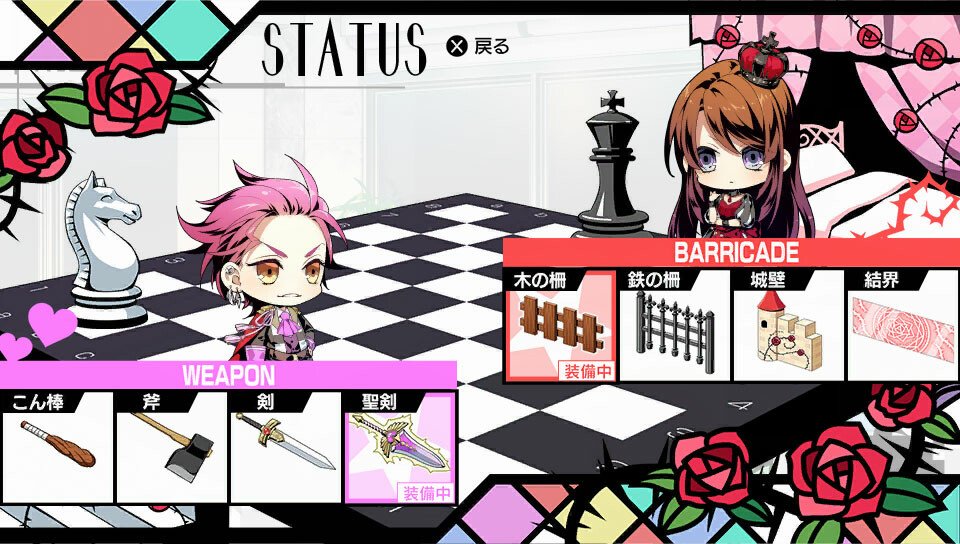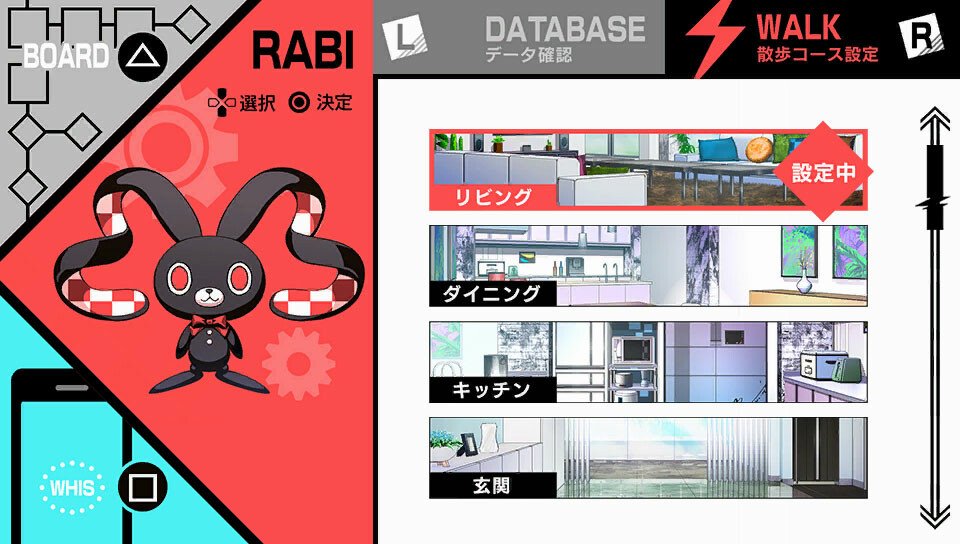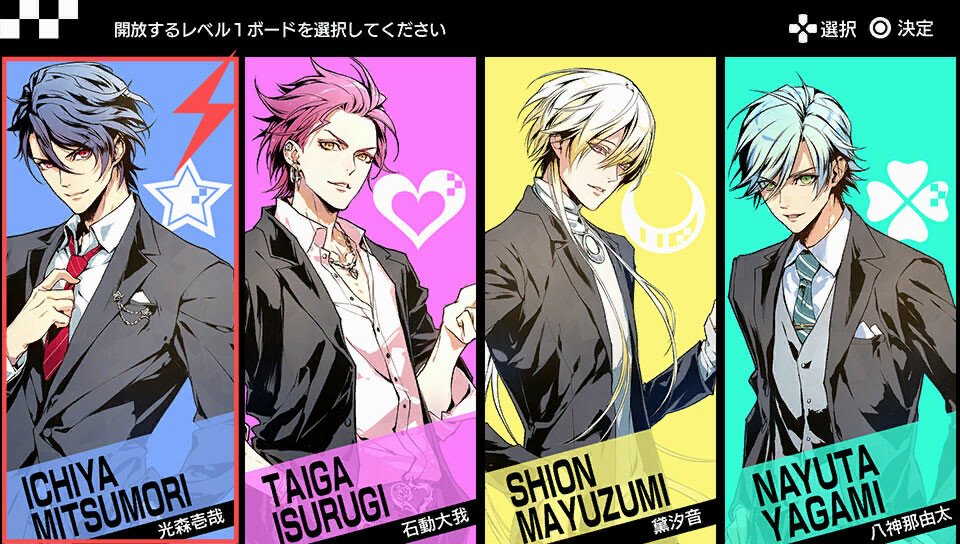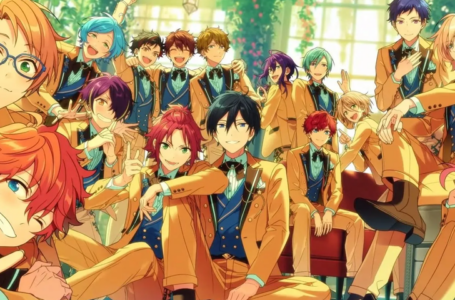9 reasons you should look forward to Variable Barricade
Variable Barricade is set to release this month on the 24th, and after Cupid Parasite turned out so well, it’s fair to say that otome enthusiasts are looking forward to this one. So, much like we did with Cupid Parasite, it’s time to look at what make Variable Barricade such an intriguing otome — and why it should be on your wishlist.
It’s another laid-back romcom with a “living under one roof” theme
Did you happen to enjoy the sadly infrequent scenes in Cupid Parasite where the love interests were appearing on a TV show in a big, shared house? There are plenty of moments like that in Variable Barricade. Expect meta jokes about the genre, banter between the love interests — often at the expense of our main character Hibari — and attempts to get one over each other in order to win Hibari’s attention.
All these events help emphasise the relationship dynamics between the guys and make their sense of camaraderie and affection for one another all the more appealing and memorable. Arguably the best is the relationship between Taiga and Nayuta — the former has a soft spot for the latter thanks to his gullible nature, though he often attempts to rein this in so he can keep up the appearance of “not caring”. It’s safe to say there is a lot of humour in this one.
Its chess game motif interwoven into its gameplay mechanics

Variable Barricade has a strong chess board motif across its design, which is brilliantly implemented as a way to visually capture how Hibari and the love interests are playing a back and forth competition: Hibari is keeping her defences up against their advancements, while the guys are on the “attack” in an attempt to make her fall for them. Its flowchart is designed as a chess game, with the first boards of the love interests unlocking during the common route before the player settles on a specific character’s route.
In each of the end sections of these love interest boards/flowcharts, there is a chibi illustration that determines if Hibari has kept her “barricades” up — preventing her from falling for the LIs — or if they’ve managed to break it down and increase her affection for them. This is determined by your choices made during the board you’re currently playing on, and as far as we can currently tell, it seems to make for a fairly straightforward visual representation of which ending you’re heading for.
Its mobile messaging app, WHIS
The WHIS app is a mobile messenger-style mechanic that adds plenty of additional humorous dialogue between the cast. The way in which you respond to these messages doesn’t affect route progression, but instead the system simply adds more substance to the standard visual novel format by exploring additional dialogue and scenarios. It’s a very fun add-on somewhat reminiscent of classics such as Mystic Messenger — though obviously not the entire focus of the game here.
It’s the first localised otome with art by Kagerou Usuba

This is one of the biggest points in favour of the game. The character art and CGs are exceptional, and this is down to who is behind them: Kagerou Usuba, an artist probably best known for Wand of Fortune, Will o’ Wisp and Reine des Fleurs. Their work is widely beloved with good reason — and this is the first otome title with art by Usuba that we’ve seen localised. To say that seeing such high-profile and prolific artwork finally coming to the west is an exciting prospect is an understatement, and we hope to see Usuba’s work again in the future. Please, I’m asking nicely!
On top of that, the game’s chibi art was created by Kiichi, who also provided the chibi art for Reine des Fleurs and also worked on Moujuu-tachi to Ohime-sama. All in all, the game has a wonderfully coherent aesthetic, and is quite distinct from many other otome titles you may have played.
Its heroine has her own story to tell and her own voice to reflect it
Variable Barricade is one of the few localised otomes to have a voiced heroine, played by Saki Fujita. For those unaware, Fujita’s voice is the basis for the popular Vocaloid Hatsune Miku, but she’s also an established voice actor in her own right. Her performance is top-notch, adding some much-needed characterisation to Hibari that helps make her truly feel like her own person rather than simply a cipher for the player.
But better yet is the growth Hibari goes through across the game. She undergoes her own character development as she comes out of her shell and accepts her true self without having to masquerade for the sake of her family name. She’s as much of a starring character as the love interests, and it’s an absolute treat to see a heroine have as much agency as it’s possible for her to have when she’s being put through an arranged marriage.
The RABI gameplay mechanic adds extra scenes to discover and unlock

Another additional gameplay mechanic layered atop the conventional visual novel action comes in the form of RABI, a robot handed to Hibari to keep an eye on the boys when she’s not home. Morally questionable? Perhaps, but its entertainment value is very much appreciated. You’re able to select which locations you want to set RABI up in; as you progress the story, he’ll collect new footage for Hibari to watch and react to.
By changing up the areas RABI records in, you’ll uncover CGs showing the love interests winding down within the privacy of their own rooms — and perhaps even caught in steamy situations. And, of course, funny scenarios are all but guaranteed to crop up every so often. RABI does a great job in making us happy, for sure!
Its brilliant female BFF
Hibari’s best friend Tsumugi strikes me as one of the strongest “best friend” side characters to appear in an otome. She’s opinionated, encouraging, sensible, strong — and an absolute bombshell in her Gothic Lolita outfits.
She balances out Hibari’s more guarded and naïve nature splendidly through her honesty and protectiveness — and the next time I write about my favourite side characters in the otome genre, I’m pretty sure Tsumugi will make a prominent appearance.
Trashfire love interests turned endearing by the end
If you thought Cupid Parasite’s love interests were absolute trashfires, wait until you meet Variable Barricade’s four bachelors. They have quite the list of troublesome behaviour and tropes throughout the common route alone — but this does at least help us understand and empathise with Hibari’s desire to refuse them all as potential marriage candidates!
But from what we’ve seen so far, each of them has a “real self” buried within that is deserving of a chance to shine. As the saying goes — and as a running theme for the game as a whole — looks can be deceiving. All the love interests have their own issues that helped to shape their problematic personalities and habits — and gradually seeing their true, good intentions coming to light is set to be a real pleasure.
Old favourites and new obsessions in the star-studded voice cast

The voice actors behind the lineup of love interests are likely to be a mixed bag of familiarity depending on how deep down the rabbit hole you are. It’s always an important selling point of the genre — some players will be more willing to buy an otome if a certain voice actor is among the cast, after all. That can’t just be me with Showtaro Morikubo or Junichi Suwabe, right?
Variable Barricade’s poster boy and walking book of pick-up lines is Ichiya, voiced by Kousuku Toriumi. His most well-known role is in Hakuoki as Hajime Saitou, but he’s also been seen in Period Cube: Shackles of Amadeus as Poyo-Poyo and Psychedelica of the Black Butterfly as Kagiha.
Hiro Shimono, meanwhile, voices the always excitable and eager to please Nayuta; he has previously been seen playing two very different roles in the genre, including Senri Ichinose from Norn9 and Kuroyuki from Nightshade. With the latter being a shy, reserved, younger love interest and the former being… the complete opposite, it’s fair to say that Shimono is a highly versatile actor. With Nayuta, he adds the genki archetype to his portfolio, and I’m absolutely adamant that he does this role more than justice!
I honestly am uncontrollably excited about hearing Nobuhiko Okamoto once again; he voices the sharp-tongued but down to earth Taiga and was previously heard in Piofiore: Fated Memories as Yang, Cupid Parasite as Peter Flage, and Hiroya from Period Cube: Shackles of Amadeus. He also plays Bakugo in the My Hero Academia anime, and hearing him play a character almost as hot-blooded as that in Variable Barricade was pretty much the sole reason I needed to pick up Variable Barricade for myself.
Finally, Kenji Nojima Kenji completes the love interest pool as the stunning and delicately speaking Shion. He’s likely to be the most unfamiliar to western players, with his role as Odoriko in Dot Kareshi being the only familiar credit to me, at least. From what I’ve already played, though, he seems to put on a great performance with a voice fitting for someone as perfect-looking as Shion, and I’m excited to find out how he will portray a more vulnerable side to the character.
On a final note, the Switch version of Variable Barricade adds extra content over the original release — specifically, there are more mobile texts in the WHIS app, and new after stories to explore. You can pre-order the physical release at Amazon UK, which currently has a price drop from £49.99 to £34.95!
See you again when we review it!
Join The Discussion
Rice Digital Discord
Rice Digital Twitter
Rice Digital Facebook
Or write us a letter for the Rice Digital Friday Letters Page by clicking here!
Disclosure: Some links in this article may be affiliate links, which means we may earn a small commission if you make a purchase after clicking on them. This is at no additional cost to you and helps support Rice Digital!
- Sigh of the Abyss: Shadow Bonds – Prologue Review - October 7, 2023
- Is She The Wolf? is wickedly addicting TV - October 6, 2023
- The steady consumption of Slow Damage - October 5, 2023






